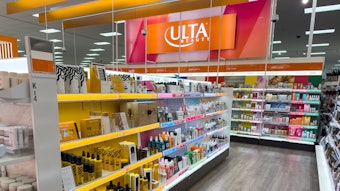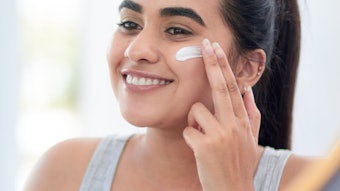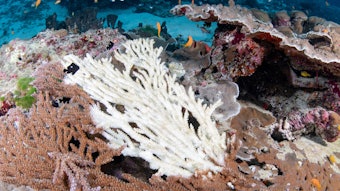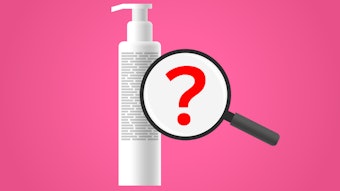
Read the full article in the May 2021 digital edition. . .
More and more cosmetics, from oral care to skin care, are targeting the microbiome and marketed to contain probiotic, prebiotic or postbiotic ingredients. Strictly defined,1 a probiotic is a viable microorganism, live or dormant added to a product to achieve a cosmetic benefit at the application site, either directly or via an effect on existing microbiota. A prebiotic is a non-viable ingredient added to a product as a nutrient. It is intended for use by the microbiota on the application site to achieve a cosmetic benefit.
A postbiotic is a non-viable ingredient composed of inactivated microorganisms and/or soluble factors, e.g., products or metabolic by-products, released by live or inactivated microorganisms. It, too, is added to a cosmetic product to achieve a cosmetic benefit at the application site, either directly or via an effect on the existing microbiota.
In addition, it is worth noting that some microbiome-relevant cosmetics do not contain probiotic and prebiotic ingredients. Instead, they are formulated by omitting ingredients believed to potentially harm the microbiome and are marketed as microbiome friendly. These may claim to be free from specific ingredients such as preservatives or sodium lauryl sulfate (SLS), or generally be formulated as gentle and mild for the skin.
Although there are no currently available international guidelines on definitions or terminologies applicable to products focusing on the skin microbiome, regulators across the world are expressing interest in this topic. The U.S. Food and Drug Administration (FDA), for example, has raised questions, considering them as potentially non-compliant cosmetic products especially when it comes to efficacy, safety and quality.2 For example:
- Are probiotics still alive in cosmetics that have preservatives?
- What are the intended functions of probiotics in cosmetics?
- Does the presence of probiotics affect product safety?
- Is there an effect on product quality?
- Are there special considerations for manufacturing cosmetics containing probiotics?
- How can cosmetics containing live microorganisms meet existing microbial contamination limits?
- Does the presence of probiotics in cosmetics affect the shelf life and storage of products?
- How are probiotic cosmetics regulated by other countries?
The present paper highlights issues such as these in view of existing cosmetic regulations, along with additional questions and concerns they raise. It demonstrates the confusion and complexity surrounding such products from a safety, efficacy and marketing standpoint. This discussion is not comprehensive, it is illustrative; and it debates whether the current regulatory landscape is sufficient or if there is a need for additional regulations to fully cover these products.
Current Regulatory Approaches
As stated, there are no dedicated global regulations or requirements that govern cosmetic products or ingredients intended to work specifically with the skin’s microbiome. The International Cooperation on Cosmetics Regulation (ICCR), for one, has been evaluating the safety, quality and regulation of cosmetic products targeting the human skin microbiome, and ongoing discussions are currently happening. In fact, early in 2021, the ICCR working group published a summary document, “Microbiome and Cosmetics,” which is a survey of product and ingredient terminologies and regulatory approaches.1
In the meantime, companies seeking to market microbiome-focused cosmetics follow the current local regulatory landscape for standard cosmetics; i.e., continuing to ensure that products are safe and deliver the benefit claimed.
The current applicable regulations in the European Union (EU), for example, include:
- 1223/2009 Cosmetics Regulation, for products and ingredients;3
- REACH and Classification, Labeling and Packaging (CLP) Regulations, for the ingredients in these products;4, 5 and
- Directive 2000/54/EC biological agents at work, for the protection of workers against risks related to exposure to biological agents.6
Similar principles are followed in other jurisdictions, such as Brazil, Canada, Japan, the U.S., Israel, South Africa, South Korea, Taiwan and Thailand. However, in some embodiments, microbiome-focused skin care, by its very nature, conflicts with fundamental facets of these regulations. It also challenges its own categorization as a “cosmetic” product and further complicates the claims substantiation process. These key issues are introduced in four segments, as follows:
- Are prebiotics, probiotics and postbiotics technically cosmetic ingredients? And are they permitted?
- How can regulators manage them in consideration of microbiological limits?
- Are microbiome-focused products “cosmetics” or are they borderline drugs?
- How do you prove they are safe and effective for all consumers?
Are Pre-, Pro- and Postbiotics Cosmetic Ingredients?
If we look specifically at the EU’s definition of cosmetics, the legislation refers to them as follows.
Article 2 of the EU Cosmetics Regulation 1223/20093
. . .Read more in the May 2021 digital edition. . .
References
- ICCR (accessed 2021, Apr 5). Microbiome. Available at: https://www.iccr-cosmetics.org/topics-documents/14-microbiome
- Katz, L. (2018, May). Comment during the Skin Microbiome Congress, Boston.
- Official Journal of the European Union (2009). Regulation (EC) No. 1223/2009 of the European Parliament and of the Council. Available at: https://eur-lex.europa.eu/legal-content/EN/TXT/PDF/?uri=CELEX:32009R1223&from=EN











